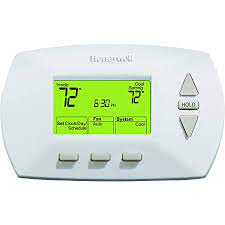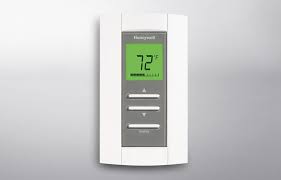My home is toasty and comfortable even on days when the temperature outside is just slightly below freezing thanks to the Honeywell Thermostat that I have had for a good while now.
I have been doing extensive study on the many aspects of my thermostat, including EM Heat, in order to make the most of its practical capabilities. I have read quite a few papers available on the internet to find out when and how you should use this function the most effectively.
The Honeywell Thermostat has a feature called EM heat, which stands for emergency heat. It is possible to move the thermostat from its main mode to its auxiliary mode, in which case the thermostat will make use of a backup electric heat strip or gas furnace to supply warmth to the space.
If I take the time to learn how to make the most of the EM Heat function and use what I’ve learned, I can make sure that my house is always warm and cosy.
Different Modes of Heat Pumps
There are three distinct modes of operation for a heat pump, all of which may be automatically switched between depending on the current weather conditions.

Primary heat pump
The process of pulling in warm air from a home’s surrounding environment as part of a heat pump’s normal mode of operation is one way in which a home may be heated. This procedure operates in a manner that is similar to that of a conventional air conditioner.
In a similar manner, a heat pump will pull hot air from a place and then release it into the surrounding environment in order to bring the temperature down. This setting works well in environments when the ambient air is already at a comfortable temperature.
Auxiliary heating
If the temperature outside is really low, the heat pump can have trouble bringing in enough hot air to adequately heat the space within the building. In these kinds of circumstances, the heat pump will switch over to the auxiliary heating mode.
During the auxiliary heating mode, the heat pump will make use of an electric heat strip to provide additional warmth. The warmth that is generated by the heat strip is what is used to heat the space when electricity is sent through it. During this mode, the addition of additional heating may be obtained by turning on the heat strip.
It is essential to be aware that working in auxiliary mode results in a large increase in the amount of power used and, therefore, the monthly bill for the utility. As a result, it is recommended that you use the thermostat in this mode as little as possible whenever it is practicable to do so.
Backup furnace
A gas furnace is used as an alternative to using electricity for supplementary heating in order to provide the required amount of warmth to the space. The burning of gas in the gas furnace results in the production of heat, which is subsequently dispersed throughout the area.
This specific form of operation is favoured over the electric mode owing to the cost-effectiveness of gas as well as the excellent heating qualities it has.
What is EM Heat on Honeywell Thermostat?
Honeywell thermostats are equipped with a function known as EM Heat, which stands for emergency heat. When EM Heat is turned on, the heat pump immediately switches from its main mode to its auxiliary mode without making any further adjustments.
In this mode, rather than depending on the traditional technique of collecting warm air from the outside of your home, the thermostat switches to a backup electric heat strip or a gas furnace to provide heating for the room. This is done in place of the usual method of extracting warm air from the outside of your house.
To put it more simply, EM Heat denotes operation that is restricted to the auxiliary mode alone. It is essential to only utilise EM Heat when the temperature outdoors dips to very low levels.
Using EM Heat when it is not necessary may lead to a large rise in running expenses. This is particularly true when using the electric heat strip. Your thermostat will be able to maintain a consistent temperature in your home throughout the whole year with the help of EM Heat, regardless of the weather outside.
Warning About Changing to EM Heat by Manually
Heat pumps are equipped with an automatic system that may switch between several modes in a smooth and seamless manner, depending on the weather outside. As a result, there is no need for you to take any action even if there is a major decrease in temperature.

The extra warmth that is necessary will be provided mechanically by your heat pump. In a similar fashion, when the temperature drops to an acceptable level, the heat pump will transition back into its main mode.
The EM Heat mode should not be manually activated, since doing so is not advised. If you manually activate EM Heat, the heat pump will stay in its auxiliary mode during the duration of the activation.
Even if the temperature goes back to where it should be, it will not switch back to the main mode unless you actively remove the EM Heat feature.
Even in regions with more mild temperatures, forgetting to switch off the EM Heat mode will cause the heat pump to operate in the auxiliary mode unnecessarily, which will waste energy and drive up expenses.
Because of this, you should put your trust in the Honeywell thermostat to take care of the changeover for you automatically.
When to Use EM Heat
EM Heat is often required during the winter season because of the exceptionally low temperatures that occur outdoors at this time of year. When faced with circumstances of this severity, the heat pump will switch into the auxiliary mode in order to provide extra warmth.
You have the choice of using either gas furnaces or electric heat strips in order to provide this additional heat to the space. It is important to keep in mind that utilising electric heat strips may end up being pretty pricey, which is why it is recommended to give priority to using gas furnaces whenever it is feasible to do so.
The EM Heat mode of the heat pump will be automatically deactivated as soon as the temperature of the surrounding air starts to increase.
Characteristics of EM Heat
The efficiency of the heat pump in EM Heat mode is much higher than that of the heat pump in its default mode. The EM Heat mode is able to generate exceptionally high temperatures and can function normally even when the outside temperature is quite low.
Nevertheless, it is essential to keep in mind that continued use of the thermostat in the EM Heat mode might lead to increased expenses. As a result, it is recommended that its use be restricted to circumstances in which the cold is intolerable and for shorter periods of time.
Switching to EM Heat mode is an option worth considering in the case that the heat pump becomes broken or stops working properly. In spite of this, getting the heat pump fixed as soon as possible is strongly encouraged given the high cost of running it in the EM Heat mode.
In the Event of Emergency
The very name “EM Heat” gives the impression that it ought to be used for no other purposes than in times of dire need.
It’s possible that the principal mode of operation for heat pumps won’t be enough to keep the inside of your home at a comfortable temperature when the temperatures outside are really low. When this happens, EM Heat is the only practical choice for heating your house, therefore you will need to use it.

Other situations that qualify as emergencies include those in which the heat pump has been harmed and has to be repaired, as well as those in which the heat pump has gotten frozen as a result of the very low temperatures.
In these kinds of circumstances, the only option available is to depend on supplemental heat sources, such as electric heat coils and gas furnaces. There is no other choice.
As a result, you are able to continue making use of the heat pump in this mode until the required repairs have been completed.
Costing of EM Heat
Using the EM Heat option will incur a significant additional expense. While a standard Honeywell Thermostat relies mostly on warm air brought in from the outside to heat your house, the costs associated with operating one do not constitute a substantial financial burden.
However, when the EM Heat mode is engaged, you are entirely reliant on external sources of energy such as electricity, gas, oil, and a variety of other options.
These forms of energy, notably electricity, might come at a rather high price. As a result, it is absolutely necessary to restrict the use of EM Heat to only dire circumstances.
Knowing When EM Heat is Active
There will be a flashing red light on the heat pump to let you know when the EM Heat feature has been engaged on your Honeywell Thermostat.
This glowing red light should serve as an unmistakable indication to you that your heat pump is working in the auxiliary mode even if this setting is not necessary. If you pay attention to this signal, you will be able to swiftly turn off EM Heat, so avoiding unneeded expenditures and energy usage.
In the case that the EM Heat mode is turned on inadvertently, the appearance of the red light indication will alert you to the situation. This will allow you to take prompt action and avoid incurring any expenditures that are not required.
Wrapping it up
Congratulations! You are now equipped with all of the fundamental information necessary for using a thermostat in the EM Heat mode.
You now have a grasp of its purpose, operation, and use, as well as how to detect whether or not it is active based on the indicator lights.
Remember to pick a gas furnace as your auxiliary heat source if you decide to install a Honeywell thermostat in your house. This is important to keep in mind.
If you make it a habit to check the indicator light on a regular basis, you may help prevent the EM Heat mode from being activated by mistake.
When you do the thermostat’s recommended maintenance, you will help avoid problems and guarantee that it operates at its peak potential in both the standard mode and the EM Heat mode. To sum it all up, there it is!

You Might Also Like: How to change Battery of Honeywell Thermostat (Within Minutes!)
Frequently Asked Questions
When should I switch on my thermostat’s emergency heat mode?
When the outside air becomes too chilly for the heat pump to efficiently warm the home by pumping in hot air, the thermostat immediately switches on emergency heat mode.
The thermostat will automatically turn off the emergency heat mode when the outside air temperature reaches a more comfortable level.
What distinguishes my thermostat’s heat and emergency heat settings?
The term “heat mode” refers to a thermostat’s standard working mode, in which warm air is pulled in from the outside and dispersed around the home to provide warmth.
The emergency heat mode, on the other hand, is the secondary or auxiliary working mode in which the thermostat produces heat using either an electric heat coil or a gas furnace (commonly abbreviated as EM heat). When the outside air is too chilly for the heat pump to efficiently warm the home, this mode is used.
Does auxiliary heat turn on by itself?
The temperature outside your home determines whether the supplemental heat will turn on. When required, the thermostat will automatically activate the emergency heat mode.
On the other hand, the emergency heat mode will be turned off automatically when the outside temperature recovers to a normal range.

